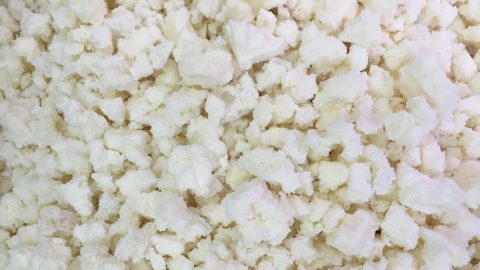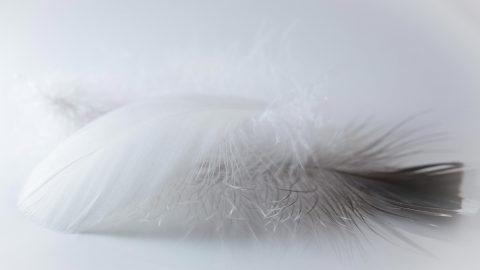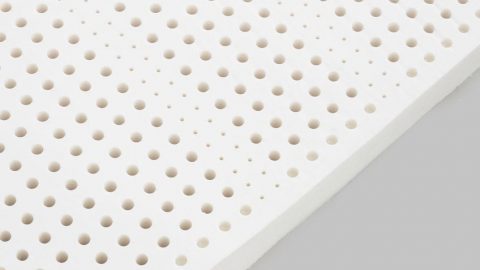
“Be gentle! Yanking out my feathers hurts.”
Down is a terrific thermal insulator and is used extensively for popular products like bedding, jackets and sleeping bags. It works well as pillow filling thanks to its soft, malleable characteristics.
Down comes at a considerable price if you’re concerned with the well-being of animals.
As we all know, down doesn’t grow on trees. Sadly, most down/feathers are gathered in a way that is distressing to the birds.
As a result, purchasing down products can result in the inhumane treatment of animals. Bird feather harvesting techniques can be unpleasant.
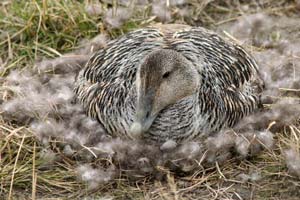
Would you use mother duck’s feathers in your pillow?
There are three methods of collection:
- After slaughter for meat – This generally involves boiling the bird’s corpses in water for several minutes to loosen the feathers. The body feathers are then plucked and the down is separated either by hand or machine.
- Live plucking – Every six to seven weeks before slaughter, birds are captured. They are held down by the neck and their feathers torn out. This process often results in the bird’s skin being torn. IKEA and Patagonia eliminated live-plucked down from their products due to this inhumane practice.
- Gathering from live birds – This method involves brushing or combing the animals to extract feathers and down that are ready to fall out naturally. This is the least traumatic of the three harvesting techniques, yet abuse is still common in industrial production.
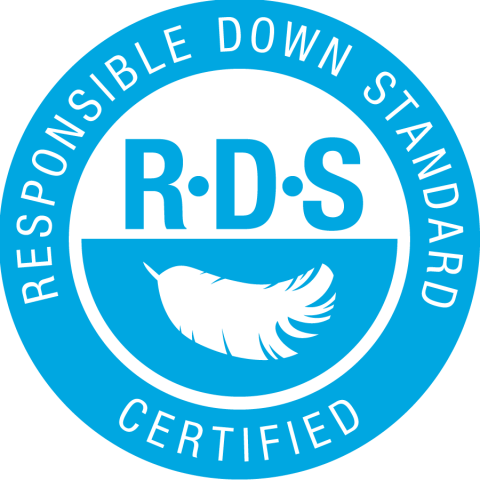
The Responsible Down Standard helps ensure that animals do not suffer.
Fortunately there are responsible options for producing down.
Pillow shoppers that are committed to their down filling AND want to treat birds better should look for products manufactured using The Responsible Down Standard (RDS).
The Responsible Down Standard is an independent, voluntary global set of guidelines that recognizes and rewards the best practices in the harvesting of bird feathers. RDS is managed by the Textile Exchange, a global non-profit devoted to the responsible production of textile products.
Over 550 million birds are now under farm certification to the RDS. Those birds are grateful!
What are “down alternative” pillows?
Products labeled “down alternative” are most commonly filled with some variation of polyester fibers. These have become quite popular thanks to the advancement of technology. These synthetic materials can perform nearly as well as real down. Additionally, they are easily cleaned.
Note: “down alternative” filling is often marketed as being hypoallergenic. Down alternatives are presented as options for those suffering from allergies to down. It turns out that down allergies are very rare. What is common is an allergy to dust mites and no pillow filling is immune. Make sure you’re genuinely allergic to down before you switch to a sub-par synthetic pillow filling.
The synthetic options do not require the use of any animal parts. However, these materials carry a heavier ecological footprint than down. They are not easily recyclable and do not biodegrade like real bird feathers. Thus, for the ecologically sensitive consumer, these products are a trade-off.
I tried a down alternative pillow stuffed with “poly gel fiber” filling. They’re unfortunately not as effective as genuine down.
Kapok and cotton are all natural alternatives that feel similar to down.
They’re soft and are safe for you, mother earth and all the birds out there! I’ve tried both cotton and kapok pillows. They aren’t better unfortunately. As far as comfort goes, most will agree that down is superior.
Try this (very different) option.
I would still be sleeping with my familiar old down pillow today, but thanks to a friend’s recommendation, I tried a buckwheat pillow. I wasn’t an instant convert. It was totally different, so it took some getting used to. But, after about a week, I was sleeping much better. A year later I was manufacturing my own buckwheat pillows. Yes – I love them that much! Don’t take my word for it. Our customer’s reviews speak for themselves!
Check out this testimonial from a feather pillow convert:
“As far back as I can remember using a pillow at night, I’ve used a feather pillow. Pillows stuffed with the softest down have been my default, my go to. I haughtily looked down on pillows of any other type. This was even though I’d been growing more dissatisfied with my feather pillow’s tendency to wake me in the middle of the night because it’s lofty support had degraded and squished away through after a few hours…
The first week was difficult. I was so used to the soft, plushness of feather pillows: the buckwheat pillow felt like a slab of concrete in comparison. But, then the second week hit. By then, my muscles were well adjusted. The pillow start to feel supportive rather than hard. I was a convert! This pillow is great. It excels at all-night-long support and good breathability. Unlike my feather pillows of the past, this pillow works with/for me, rather than against me. What a fantastic pillow!” –Geoff, verified Hullo customer

